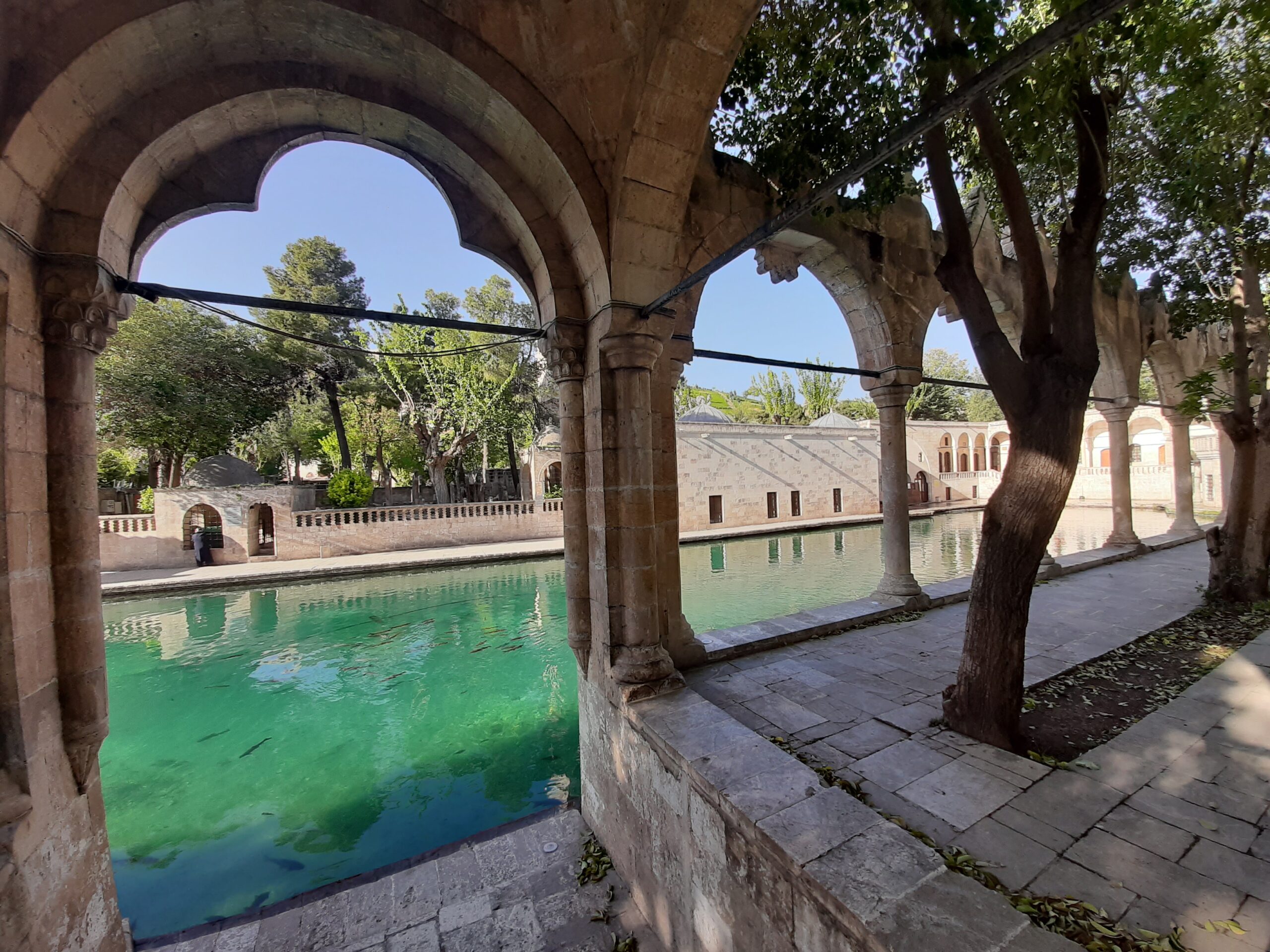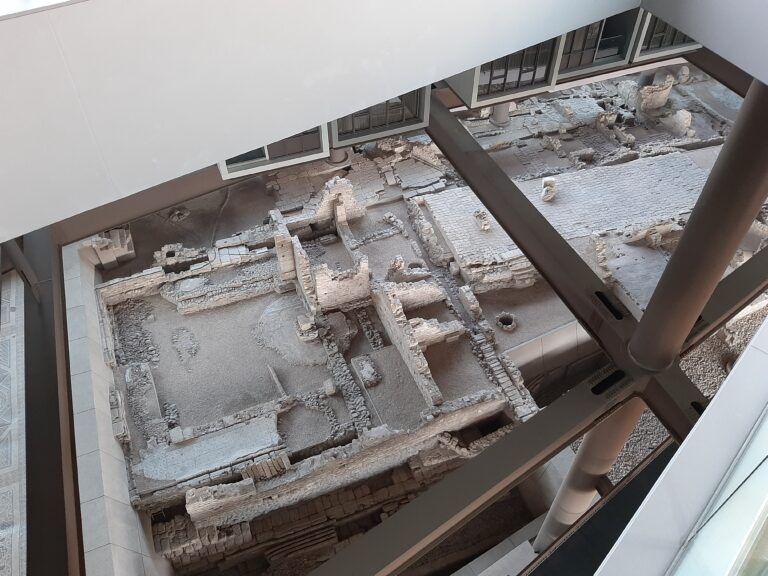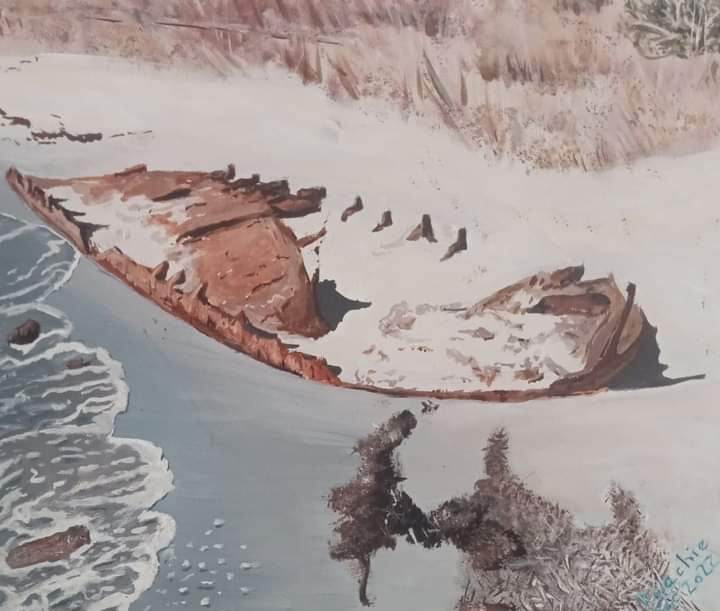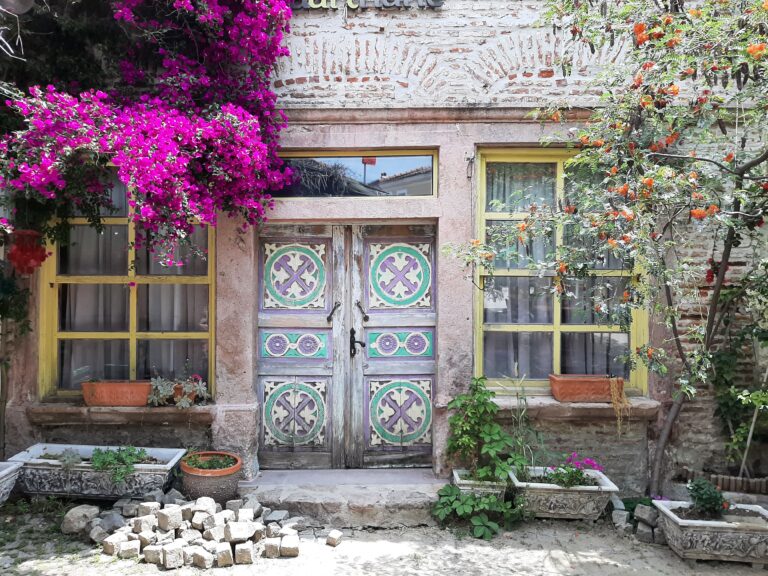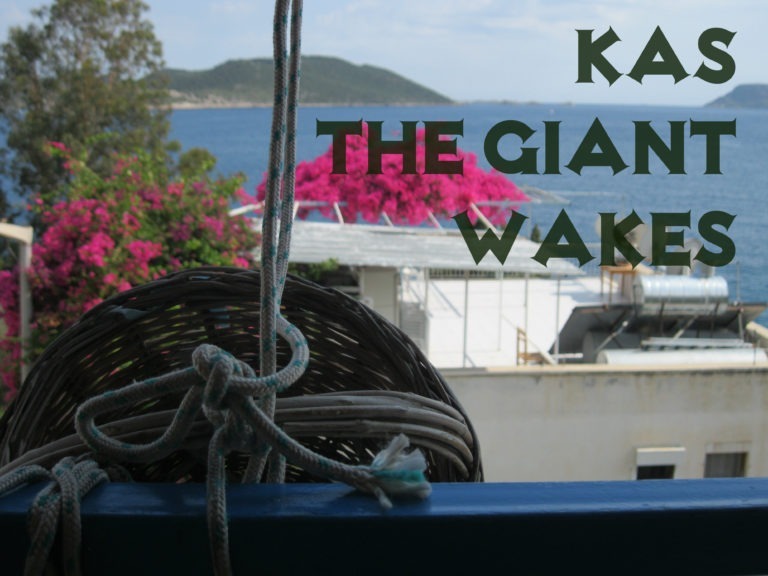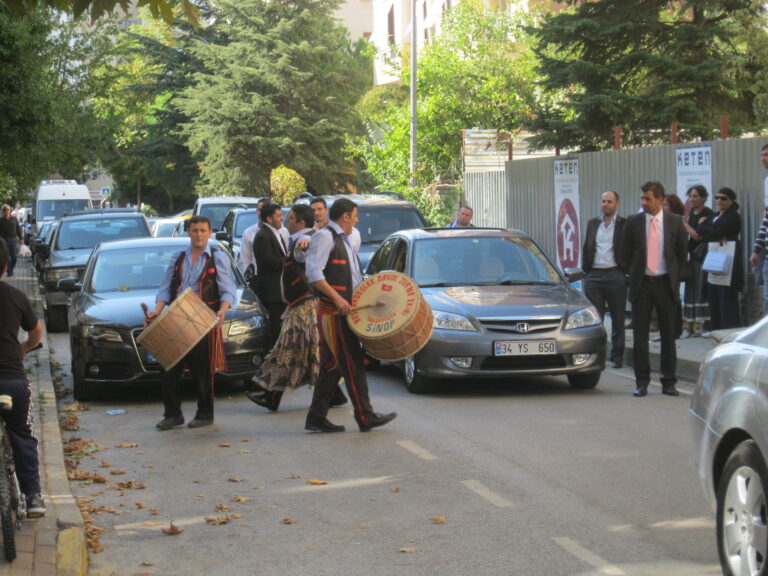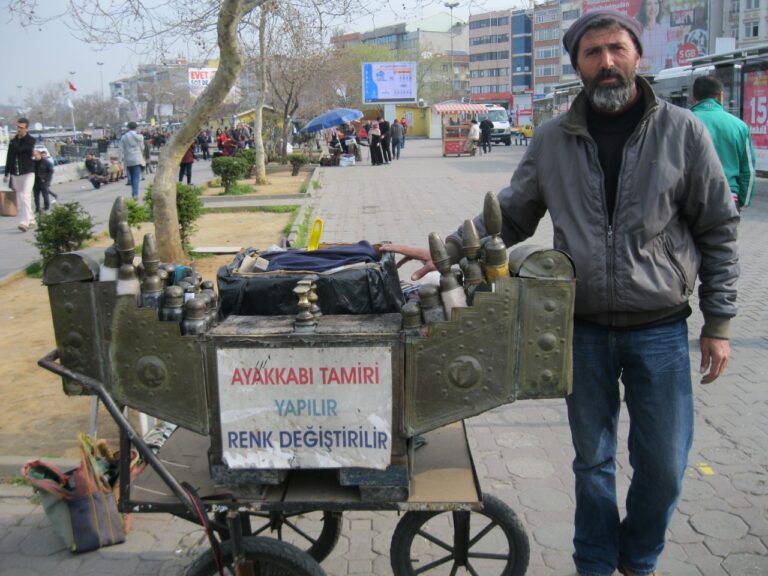Sanliurfa – What to see and do
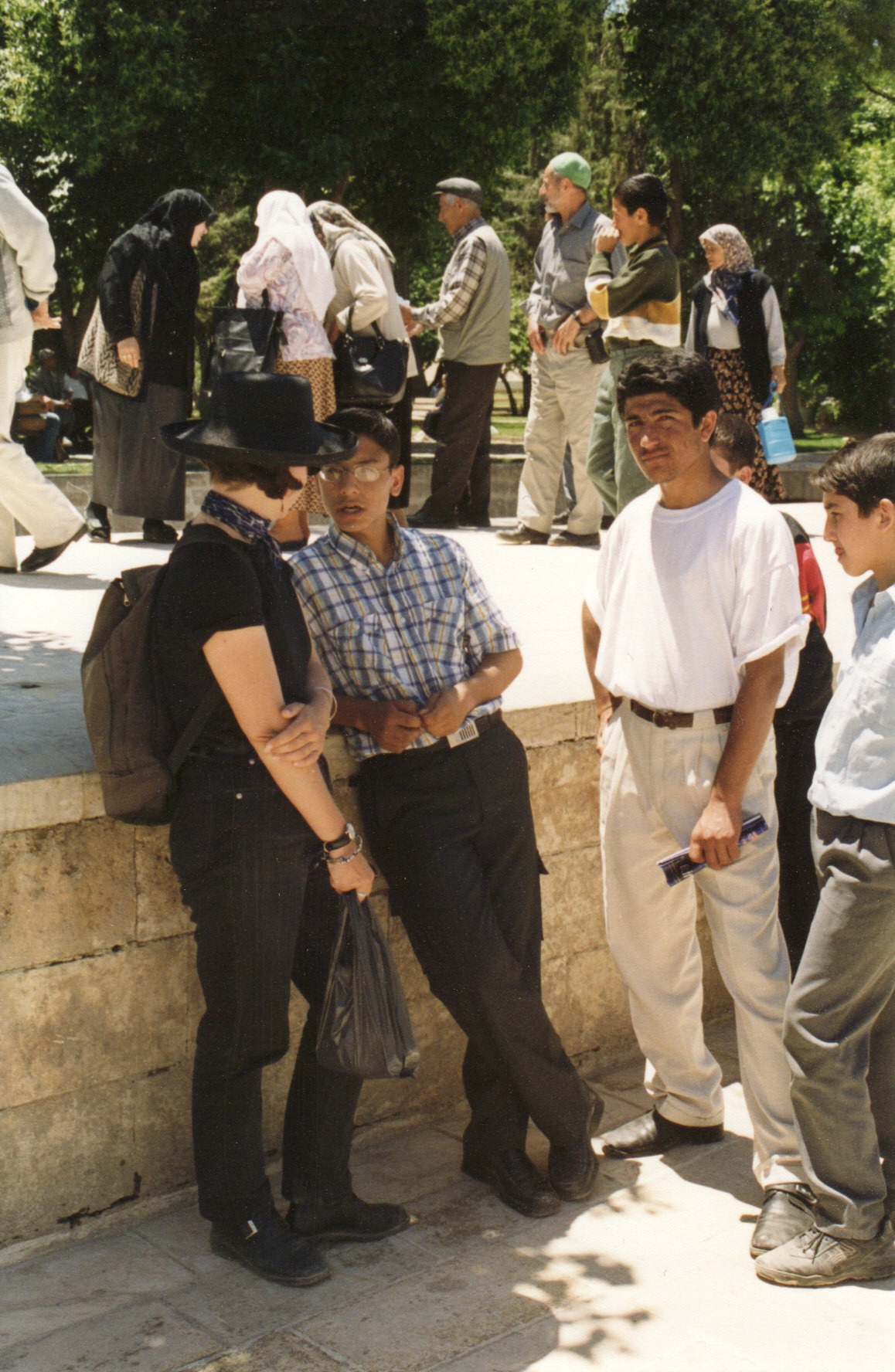
Sanliurfa (Şanliurfa in Turkish) in south east Turkey is famous for three main things. Baliklı Göl, Urfa Kebab and Göbekli Tepe and I’ve been there four times. The first time I went to Sanliurfa in 2001, Göbekli Tepe wasn’t a tourist site. I hung around Baliklı Göl, talked with Turkish school kids eager to practice their English, visited several local mosques and entered the cave said to be the birth place of Abraham himself. The second time was on a trip with 52 Turkish university students in 2004. They were all beautiful girls in their late teens and early twenties who caused a stir everywhere we went. Lunch was urfa kebab in a tradesman’s restaurant followed by servings of rich velvety künefe. Afterwards we bargained over the price of a small carpet I still possess.
On my third trip there 2007 I went back to the ponds again (they are extraordinarily mesmerising), ate cake with a policeman I met at a charity fund raiser and then spent too long deciding which tantalising sweet biscuits to buy from a shop where they were piled higher than my head. On my latest visit in 2022 I made it to Göbekli Tepe, a Neolithic archaeological site dated to the Pre-Pottery period. I revisited Ulu Camii, tried some local desserts, wandered around the markets and went back to the patisserie to show the new young workers the photo of the previous owner.
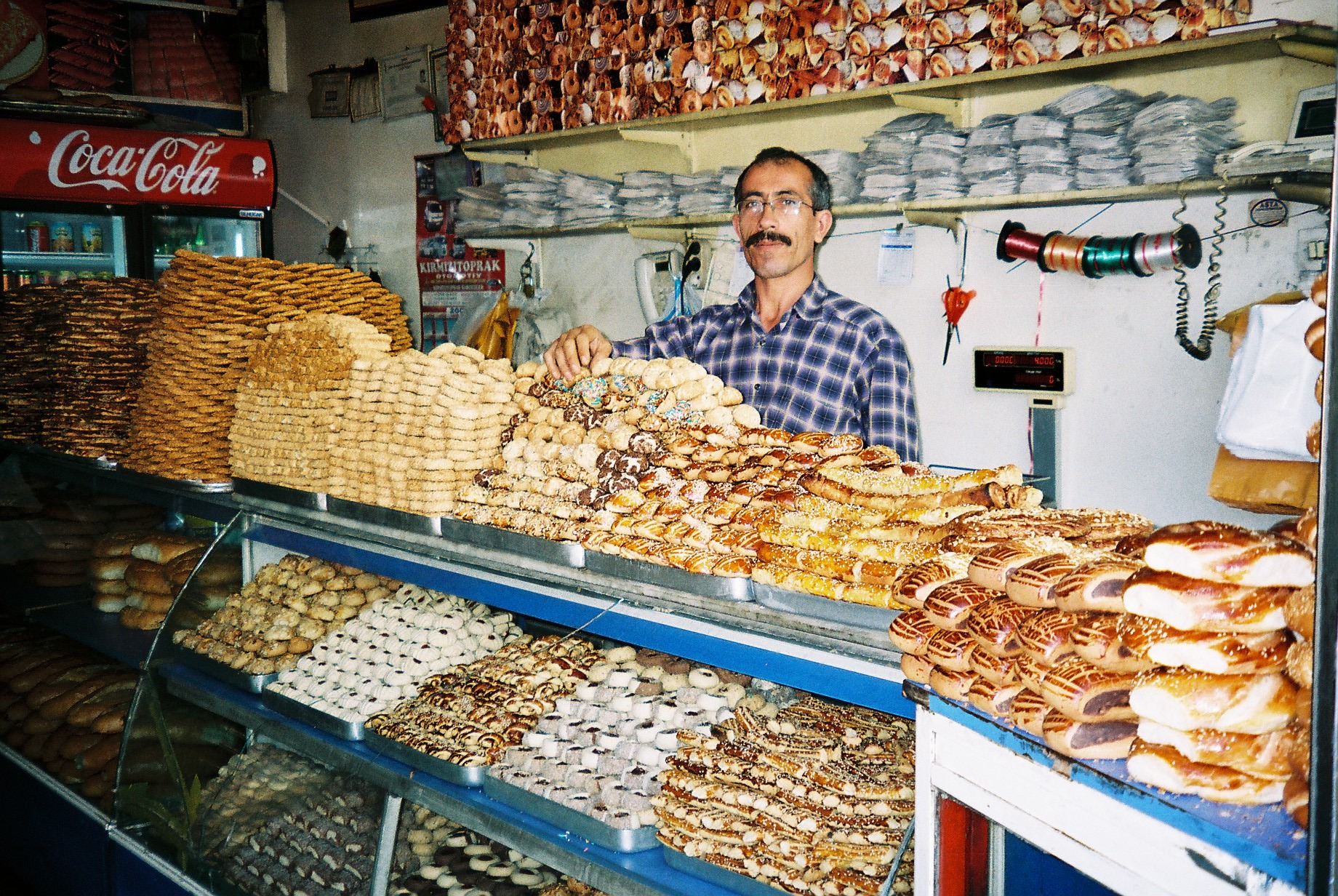
SANLIURFA HISTORY
At first sight, when you approach Sanliurfa on the airport bus, the city resembles nothing more than a mess of high rise apartments haphazardly sprawled across the rolling plains of south eastern Turkey. However, another world awaits in the old town centre. The name Urfa, as most people call it, is derived from the early Aramaic language when it was called Urhai. The Abgarid Dynasty ruled the region from the 2nd century BC, founding the Kingdom of Osroene/Orshone in 132BC. Around 150AD King Edessa V. Abgar Ukkama professed his belief in Christianity. The name Urfa was replaced with Edessa and the city became the seat of the most important Syrian bishopric. Even now it’s often referred to as the City of Prophets due to its religious importance. The city had a mixed population including Greeks and Parthians, but was fundamentally Syriac. When the Romans took over in the 3rd century AD they also called the city Edessa, and this was the name used by successive rulers until sometime in the late 16th early 17th century when the Ottomans annexed the city from the Byzantines. From then on Urfa was a Turkish city, despite briefly being occupied by Muhammad Ali Paşa, the Ottoman governor of Egypt, in the late 1830s.
When French troops occupied Urfa in 1919 during the Turkish War of Independence, the locals bravely resisted. So much so that in 1984, the Turkish Grand National Assembly passed an act adding the prefix “şanlı” to the city’s name. Plain Urfa became glorious Urfa, or Şanlıurfa, to give its full name.
WHAT TO SEE IN SANLIURFA
Baliklı Göl
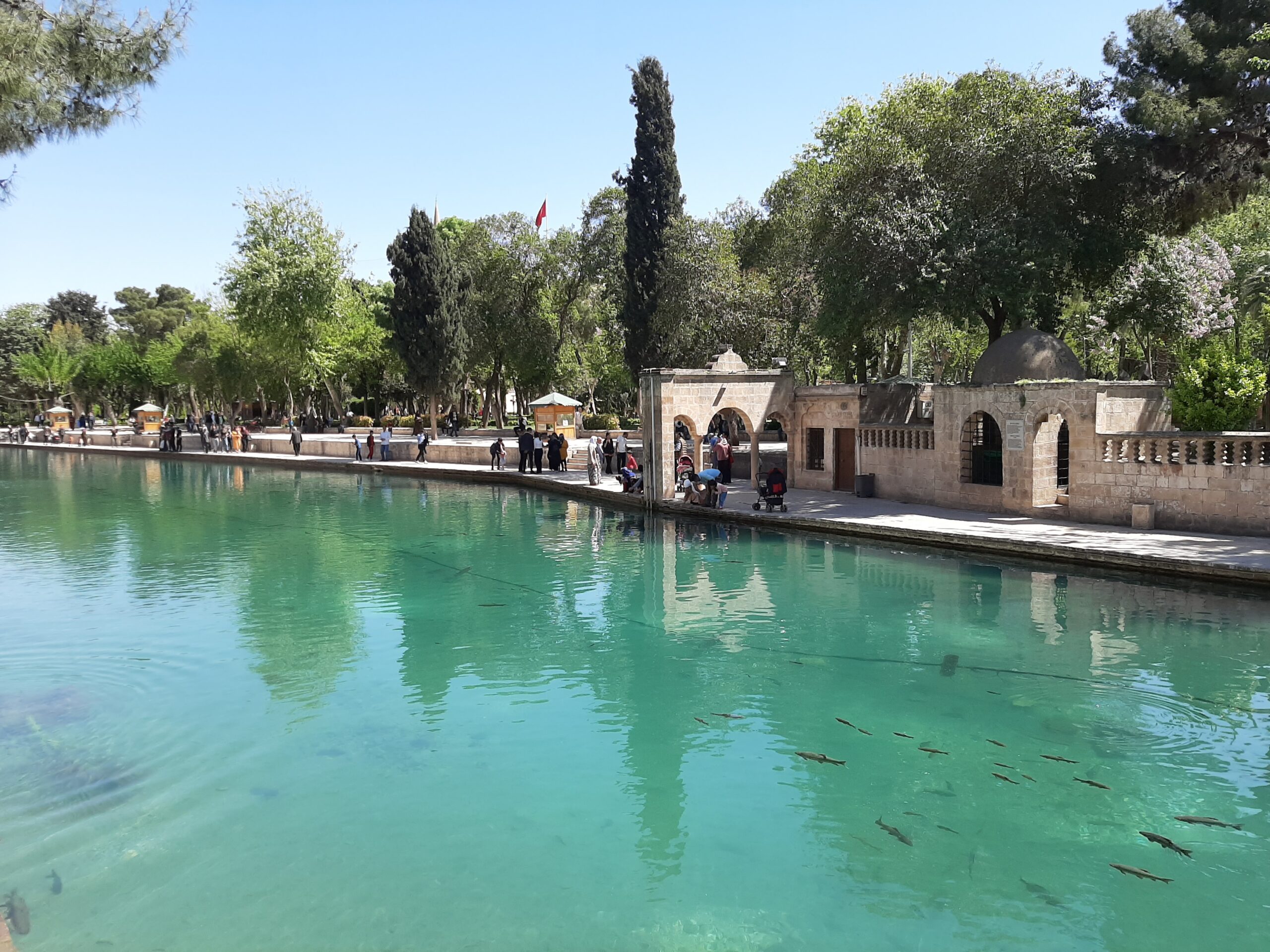
The sacred turquoise fish ponds full of fat lazy carp in the Gölbasi area of Sanliurfa mark the spot where the Prophet Ibrahim/Abraham was transformed into ashes. According to legend, Assyrian King Nemrut (aka Nimrod) threw the prophet off nearby Damlacik Hill onto a fiery pyre. Witnessing this, God turned the flames into water and the burning wood into fish.
The pool and its surrounds are a popular spot for devout Muslims and Instagrammers alike. If you’re into playing dress ups you can make like an Ottoman and rent regal robes for formal portraits, otherwise just drink in the scene. On one side of the pool the lyric arches of the 18th century Rizvaniye Mosque and its medresse (school) provide a picture perfect frame, while people stand along the edge on the other side, buying small bags of fish food to give to the carp, sometimes stirring up a frenzy.
Set behind Baliklı Göl is a smaller pool named for Nemrut/Nimrod’s daughter Zeliha. She too was thrown to the fire after declaring herself in support of Ibrahim/Abraham. The first time I saw it in 2001 you could rent small boats and row around the pond among the fish. Given the holy nature of the site I thought it was a pretty odd thing to do so I didn’t.
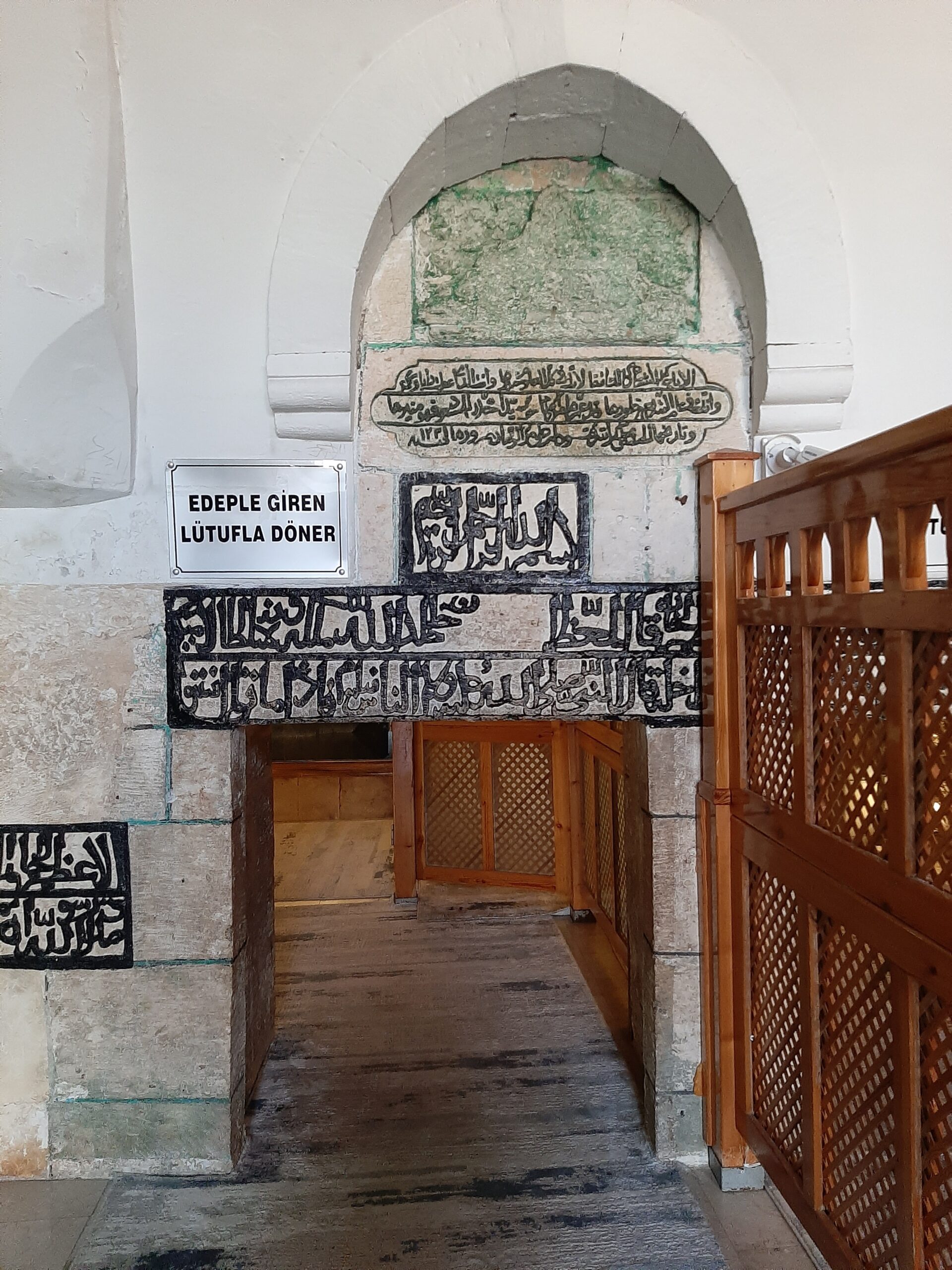
Despite not being a believer I did enter Abraham/Ibrahim’s cave. Tucked away just off the highly polished marble courtyard of Mevlidi Halil Mosque, it’s thought to be the birth place of Ibraham himself and is a magnet for those in search hope. There are two entrances side by side, one for women and one for men, and the lines move quickly. The women’s cave was full of women praying, for a baby, a cure or something else and others filling their bottles with water from the holy spring. Do note the interior is quite plain and stuffy, especially in summer.
Even if you don’t enter the cave allow time to stroll around the whole Dergah complex. As well as the mosques and lakes there’s a pretty rose garden. The greenery is quite a contrast to the dry ochre coloured palette outside town and the people watching is definitely worth it as believers, both Muslim and Christian, visit from many different countries in the region.
Bazaar area
Don’t let all that tranquility fool you though. A short distance away around the rabbit warren that is the Sanliurfa covered bazaar, the narrow streets are packed with street markets and men wearing fetching lavender floral print kaffeyeh. They cluster around tables in Gumruk Han playing backgammon, smoking hand rolled cigarettes full of yellow tobacco while cracking sunflower seeds between their teeth. Parked outside on the streets are their trusty steeds. Not horses but motorbikes, narrow bodied Kuba models, bedecked in leather covers and silky fringes with handwoven saddle bags slung across the back.
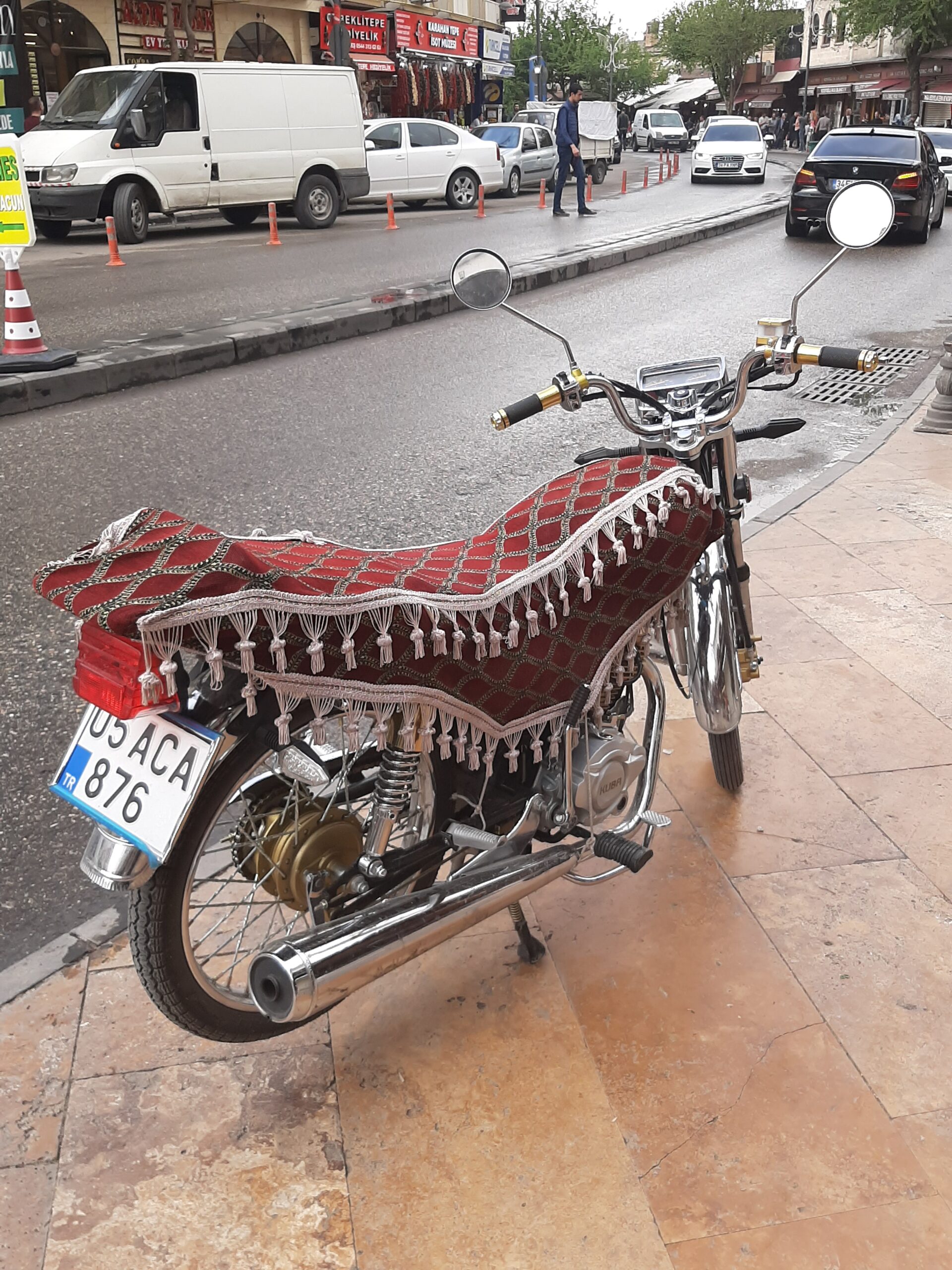
The next time I entered Gumruk Han, built during the reign of Sultan Suleyman the Magnificent in the 16th century, I was with the aforementioned gorgeous students. To say we made an entrance was an understatement. You can read all about in my story All singing, all dancing all the time in my book Exploring Turkish Landscapes: Crossing Inner Boundaries.
Mutfak Müzesi (Culinary Museum) – Closed according to council – worth checking out
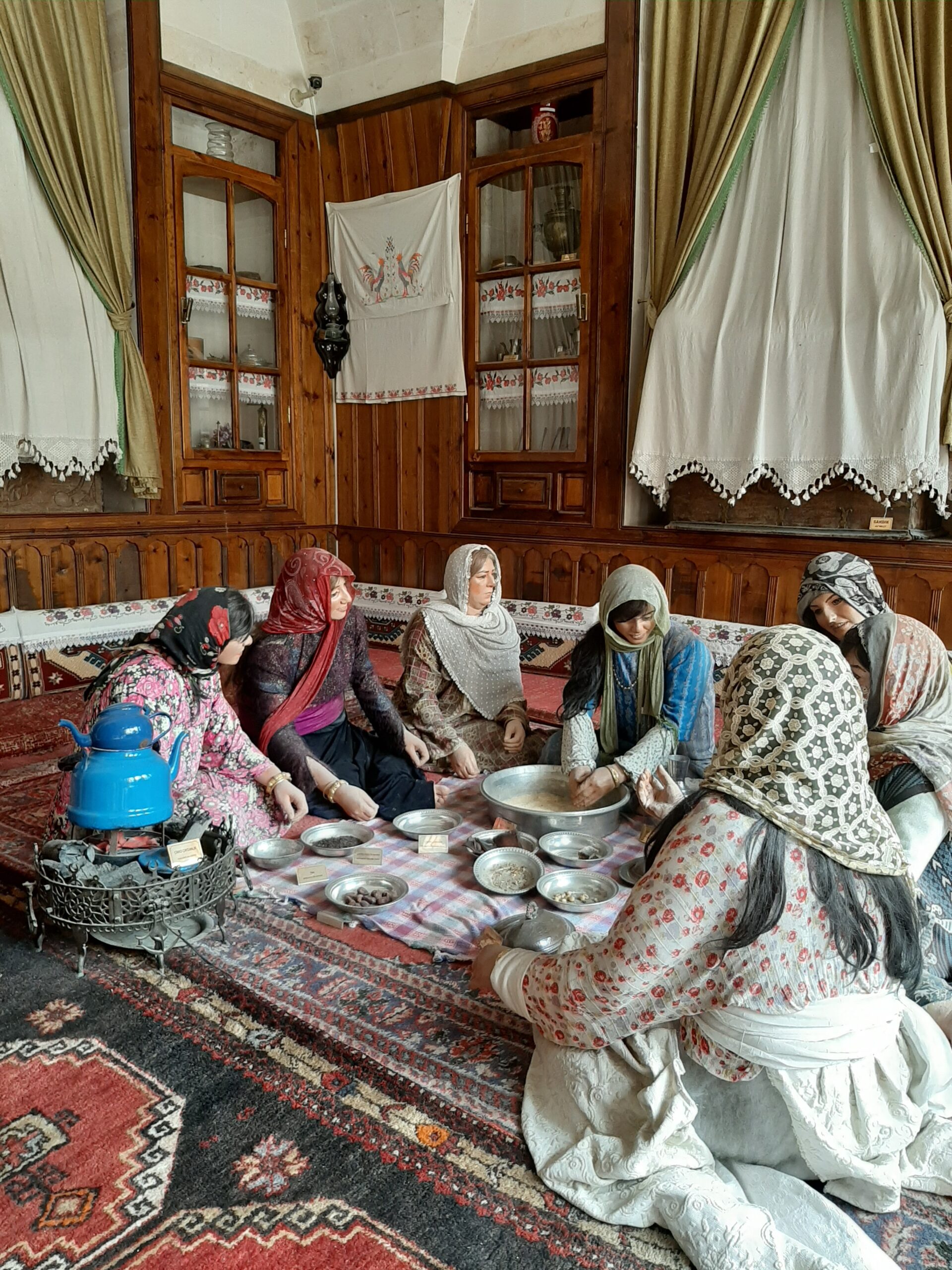
Even if you’re not into cooking, put the Sanliurfa Mutfak Müzesi on your itinerary. Formerly a private home, the municipality bought Hacıbanlar House to showcase local cuisine and cooking methods, as well as life in a traditional Urfa home, and that’s where the beauty lies. The rooms are full of hand carved wooden cupboards and ceiling decorations while the exterior masonry is superb. The displays include traditional equipment used in local kitchens, much of it obviously made by highly skilled artisans, and tableau of unnervingly realistic mannequins dressed in garments specific to the Urfa region. There are five rooms, two wells and a large courtyard.
Address: 1349 Sokak, No 3
Open 9-5. Closed Monday. Entrance was free but might change when museum opens again.
Sanliurfa castle
I’m not much of a ruined castle type of person, and although I love walking, the summer heat in Sanliurfa means I stayed on flat ground and stuck to the shade as much as I could. I haven’t actually walked up to the castle but according to various sources, a palace once stood on the hill at the spot where it’s located, flanked by villas belonging to noblemen of the Kingdom of Orshone. A large number of artefacts dating to Byzantine and Islamic periods, including Ottoman, were discovered during excavations. Experts believe the final design of the castle was completed during the reign of the Abbasids who reigned from the 8th to the 13th centuries.
The palace is long gone and all that remains are the walls and two Corinthian columns at the top, dramatically lit up at night. They’re believed to mark the spot where Prophet Abraham was thrown from by King Nemrut. All I can say is he must have had a pretty impressive throwing arm, given the distance. If you make it up there look out for the Aramaic inscription on the north-facing surface of one of the columns. It confirms the column was built by the kingdom of Abgar, the local Kingdom of Urfa in the 3rd century AD and reads, “I am Eftuha, son of the sun. I built these columns and the statue on them for Queen Shalmet, daughter of King Mano”.
Address: Yusufpaşa Mahallesi, Ptt, 5 Caddesi
Open 8.30-5. Closed Monday. Entry free (at least according to the council)
Ulu Camii
Ulu Cami, Urfa’s grand mosque, is fairly simple in style. It’s modelled after Syrian mosques and has 13 eyvan, vaulted halls that open onto a large courtyard shaded by Cyprus trees. Provided you can find a free seat it’s nice to stop and have a break here, away from the bustle of the street. There’s a freestanding clock tower and şardıvan, the ablutions fountain where worshippers wash before prayers, but not much else of note.
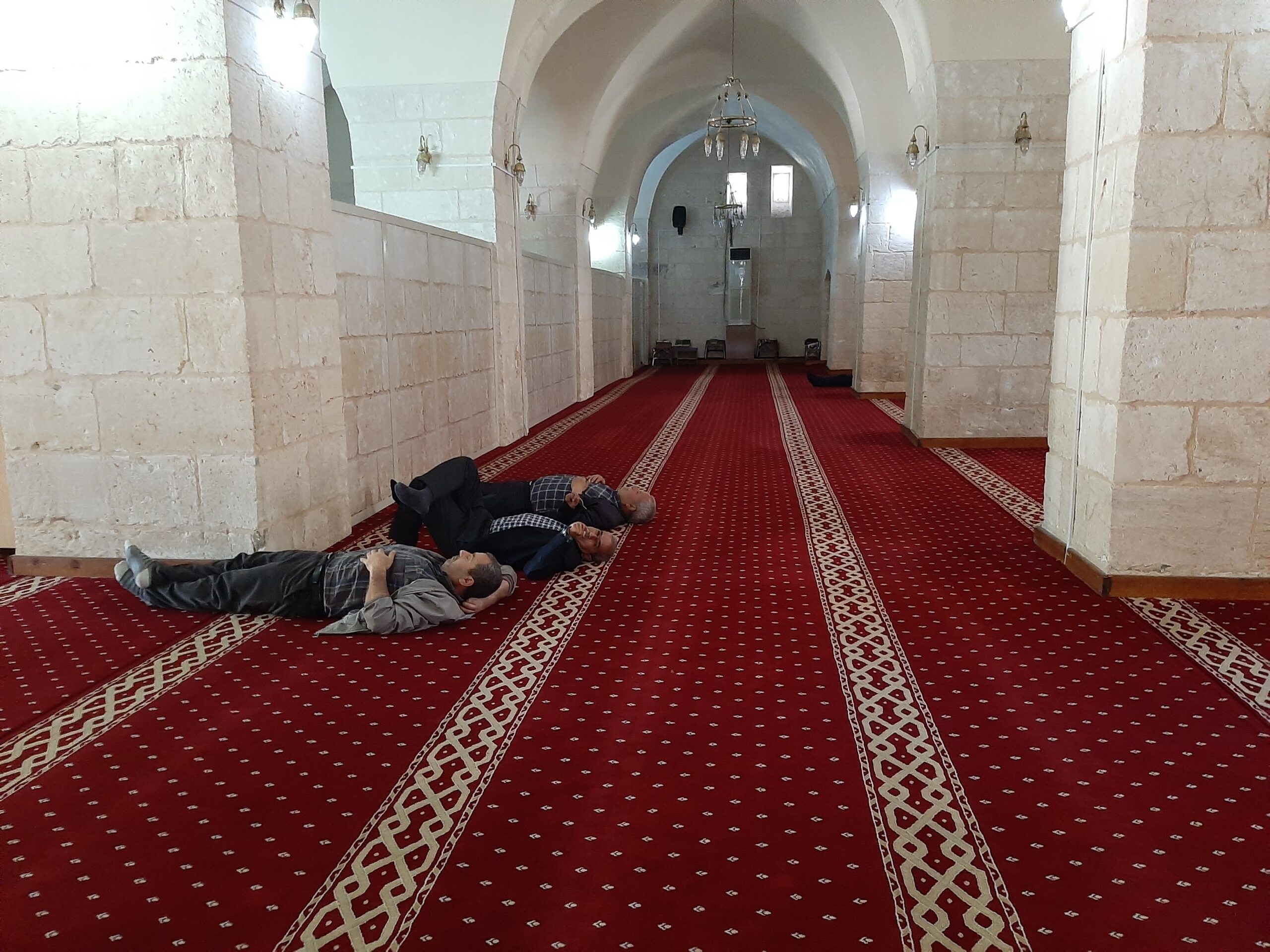
Being my father’s daughter I had to look inside so put a scarf over my hair and entered the women’s section. Unfortunately it’s a late addition so all I could see were particle board walls and the tops of arches. Spying a door I cautiously opened it, disturbing three men lying on the carpet. Seeing my worried face they laughed and beckoned me into the main section. I was very curious as to why they were prone on the ground so I asked them. “It’s lovely and cool in here”, one answered, and I had to agree. I’m glad I sated my curiosity and can also tell you the interior is very plain, but the congregants very friendly.
Address: Divan Yolu Caddesi
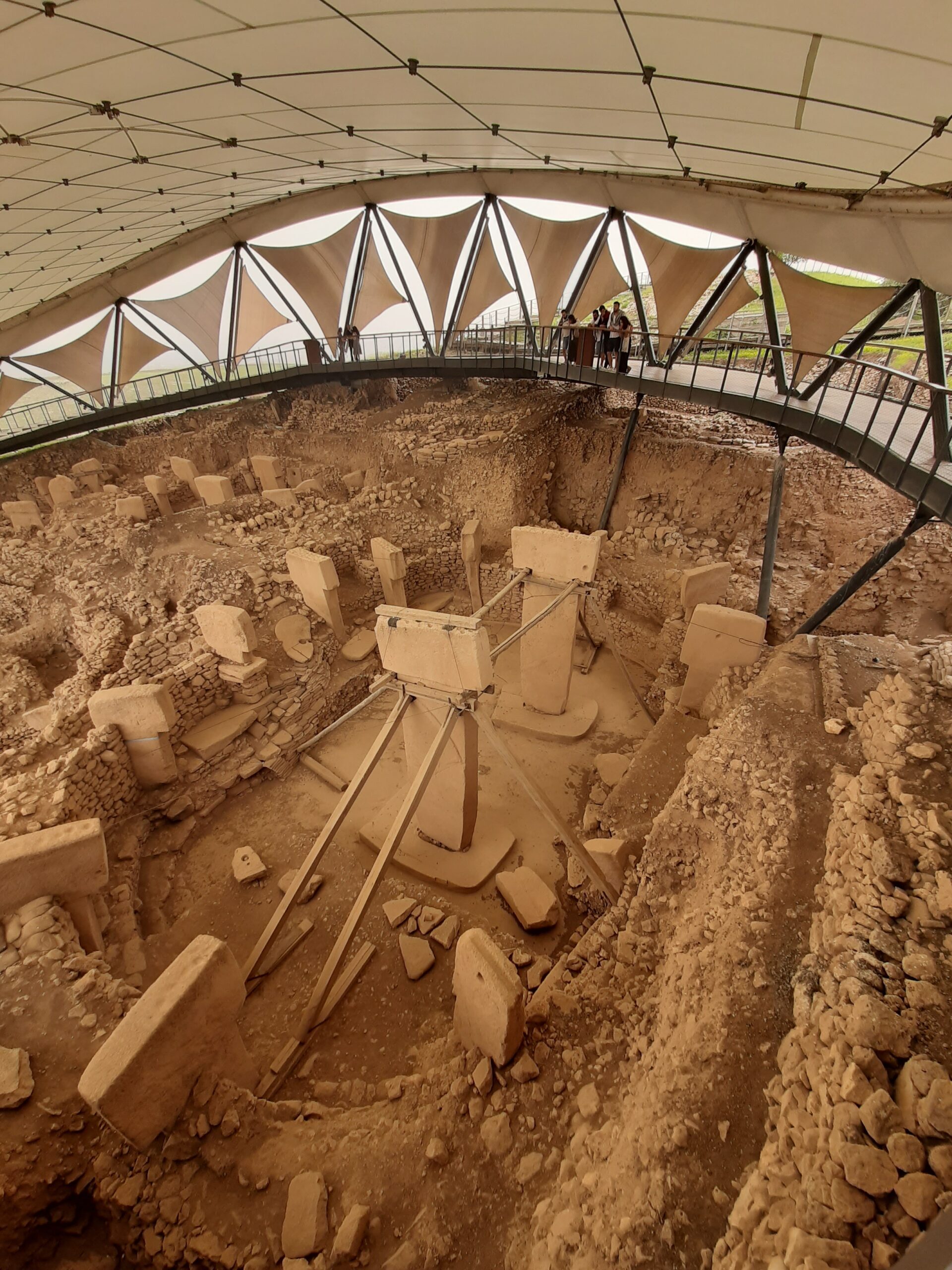
When German archaeologist Klaus Schmidt started digging into a mound 22 kilometres north east of Sanliurfa, the site had already been assessed by a team of anthropologists from the University of Chicago and Istanbul University anthropologists in the 1960s. They decided the mound that rose 15 metres above the surrounding area was nothing special, but Schmidt had a feeling. To him the site definitely looked man made so in 1995 Schmidt assembled a team of six people, including himself, and they started digging. Very quickly they struck what turned out to be the top of a megalith nearly 5 metres in height. Further work uncovered more pillars, all weighing between 7000 and 1000 kilograms, carved with foxes, lions, birds and poisonous insects. What they didn’t find was any proof this was part of a permanent settlement. This is significant because up until this discovery, sites of worship had always been found near the remains of houses, cooking hearths, rubbish dumps and buried fertility figures. Using carbon dating, Schmidt and his co-workers were able to estimate Gobeklitepe’s age to around 9000BC.
On arrival at site, buy ticket, pick up audio guide then go to turnstiles and catch the free shuttle up to the dig site. Definitely go to Gobeklitepe first then visit the Sanliurfa Archaeology Museum (see below) to see artefacts from the site. Buses depart from outside the archaeology museum out at 9.45am.
Bus tickets cost 26TL(prices are always subject to change) each way and you can pay the driver on the bus. The bus leaves from in front of the Archaeology Museum every hour, starting from 8.45 (then 9.45, 10.45 etc, with last bus leaving at 16.45). The bus returns to Urfa at 10am then every hour on the hour with the last bus leaving Gobeklitepe at 18.00. Make sure to visit the Gobeklitepe exhibition centre. It’s well put together and very interesting.
Entrance price €20*
Open 7 days, 8.30-7pm.
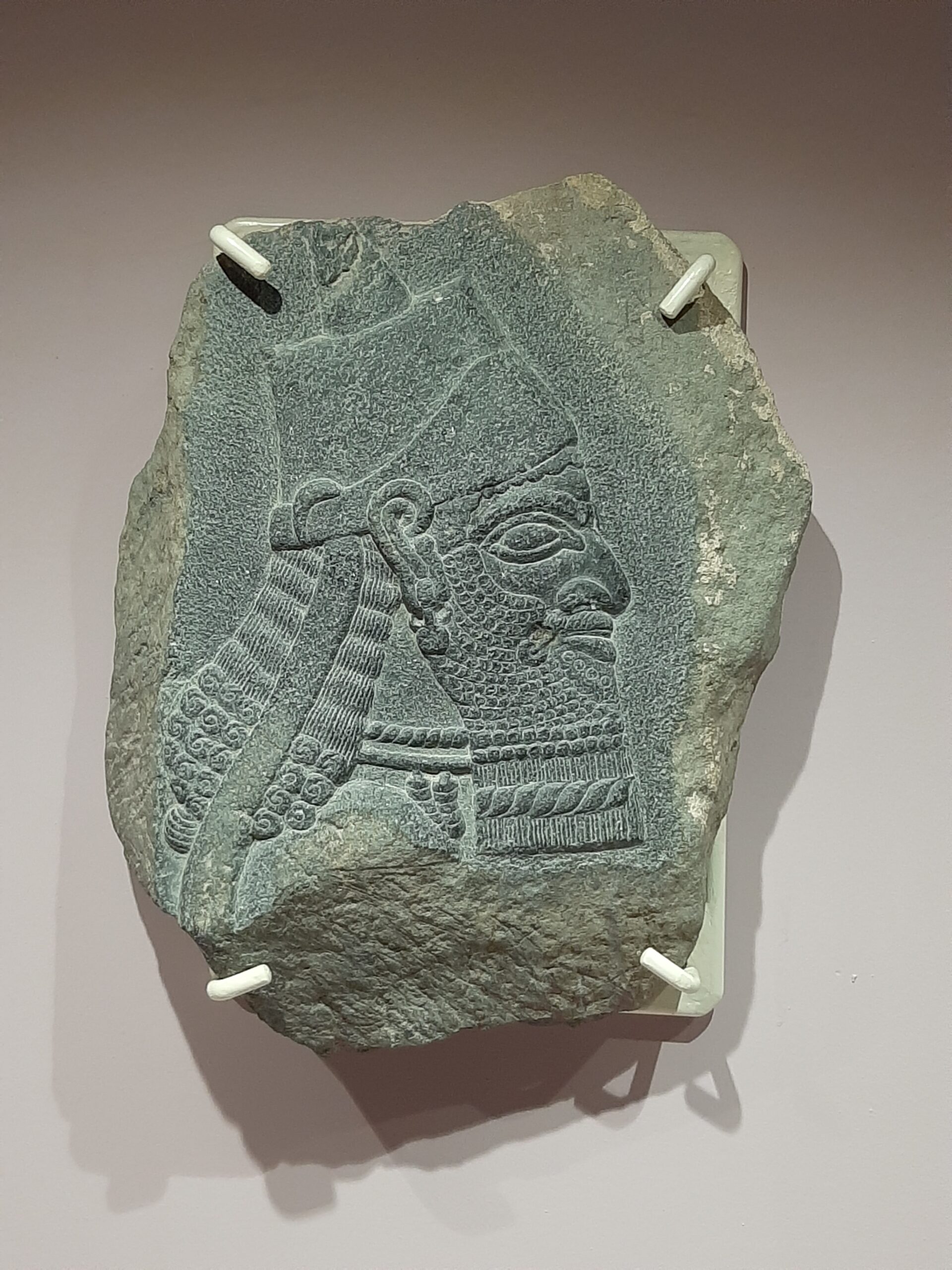
Once you’re back in town grab some lunch and then head to the Sanliurfa Archaeology Museum. It includes lots of finds from Gobeklitepe among the more than 10,000 items on display. There are 14 exhibition halls spread over two floors. The ethnographic section contains display cases full of clothes, silver and bronze ornaments, handiworks, doors with epitaphs, examples of calligraphy and hand written Korans, but I headed straight for the exhibition hall dedicated to Assyrian, Babylonian and Hittite artefacts. I just adore the crinkly hair and beards styles on the sculptures.
In the second and third halls there are Neolithic, Clacolithic and Bronze age stone tools, terracotta objects, stamps, pithoi, necklaces, figurines, metallic tools, ornaments, and idols. These days I sometimes skip exhibitions like these because I’ve seen so many similar collections, but not in this case. Standing in a section of his own is Urfa man, the famous Balıklıgöl statue. At 9,500 years old, Urfa man is the world’s oldest life-sized statue of a human and is really incomparable to anything else I’ve ever seen.
Purists might scoff but there’s also a reconstruction of the Gobeklitepe temple. I loved it because you can walk among copies of the pillars, allowing you feel the majesty of the megaliths contained at the original site and imagine their spiritual impact on the people who made them.
Address: Haleplibahçe Mahallesi, 2372 Sokak, No 74/1
Opening times: 08.30-17.00, open 7 days. Entrance price €10*
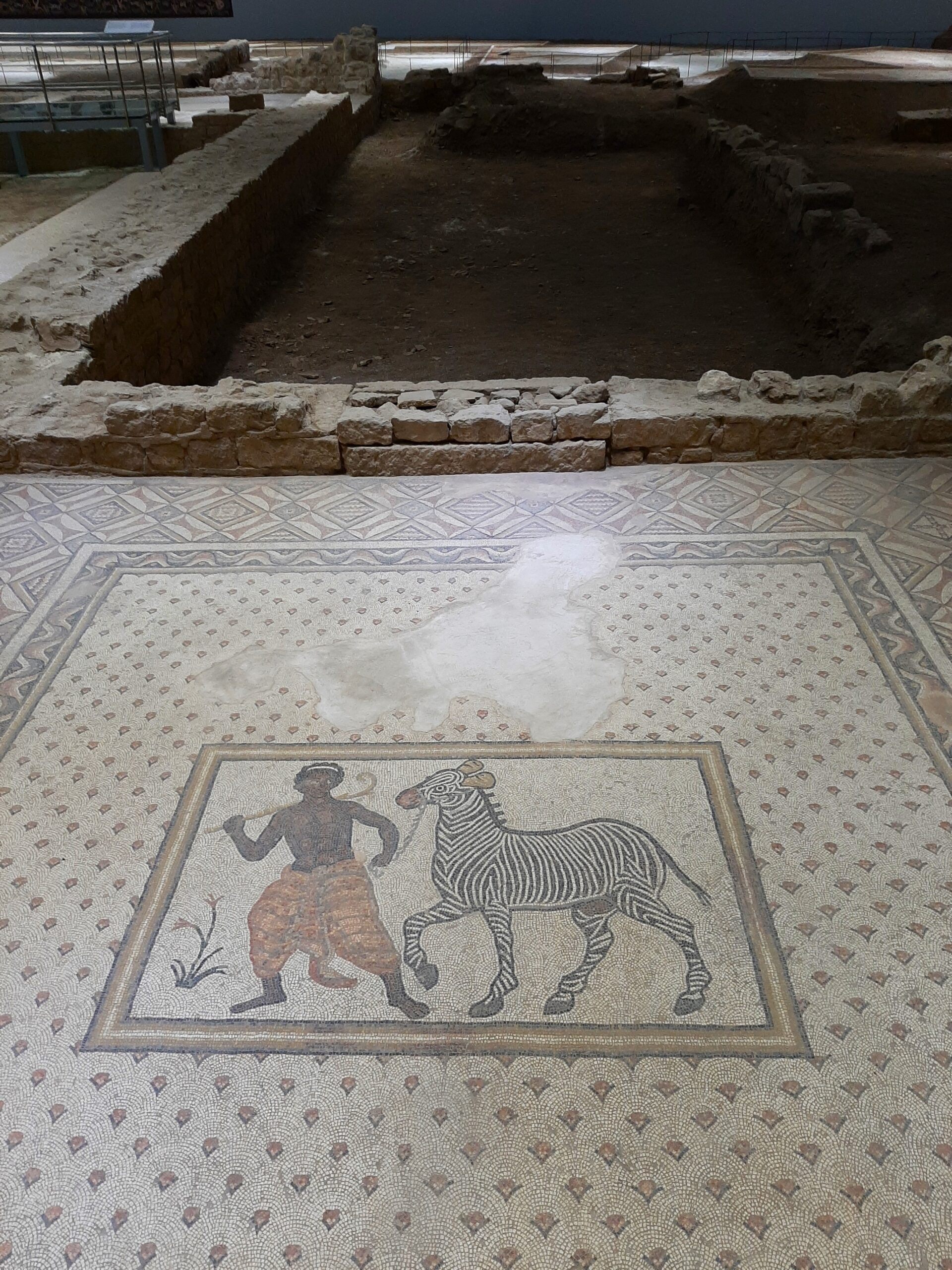
But wait, there’s more. Out in the grounds there are various archaeological items scattered about, but most importantly, there’s the path to the Haleplibahce Mosaic Museum, located in a covered circular building. Your museum entry ticket gives you access and I guarantee you’ll be blown away when you see the mostly intact mosaics on what was originally the floor of an ancient Roman townhouse. They were discovered quite by chance, during construction work to improve the museum’s sewage system.
Inside, a circular path built over the mosaics lets you see the complete floor which covers 5,000 square metres. The mosaics include portraits of wealthy nobles, religious figures, an African man, possibly a slave, leading a zebra on a chain and mythological scenes of centaurs, as well as Amazon queens on horseback hunting tigers for whom this ‘Villa of the Amazons’ is named. One of the most important works depicts Orpheus surrounded by wild animals. This mosaic was created in 184AD and then sometime in the 1950s a visiting archaeologist wrote about it, but then it disappeared from sight, only to resurface at an auction in New York in 1999. The mosaic was finally returned to Turkey in 2012, only after some clever detective work and pressure from various people including academics and the Turkish government. Here’s where you can read about its rediscovery and return to Turkey. The full story is quite eye-opening.
Kızılkoyun Nekropolis
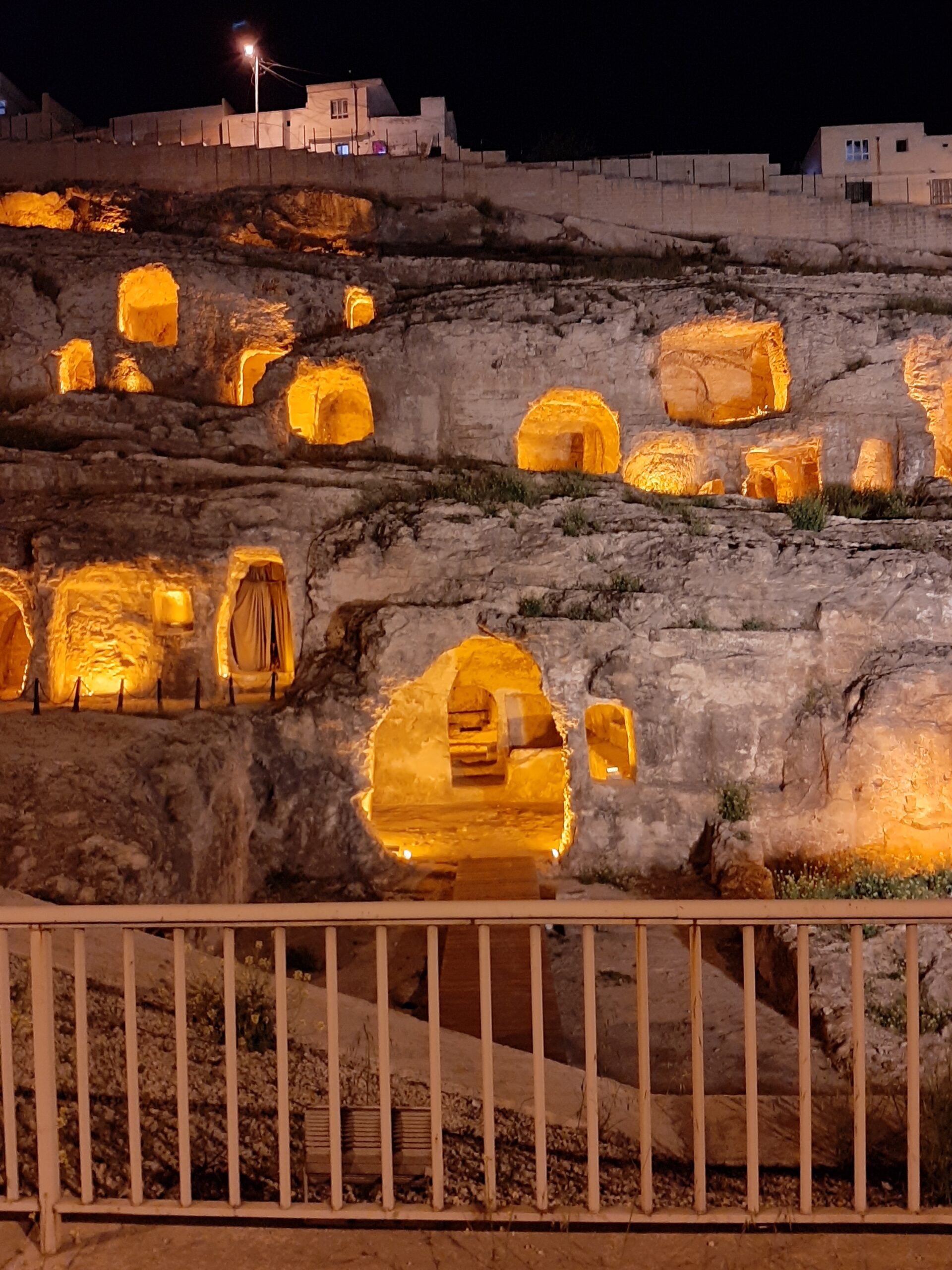
The Kızılkoyun Necropolis is a burial ground carved into a rock face located on the east side of the Sanliurfa Archaeology Museum complex. You can see the roofs and balconies of ordinary residences above it while the road leading to the museum marks the lower boundary. The necropolis was built by the Romans sometime between the 3rd and 4th centuries AD. To date 72 caves have been opened up, containing 133 rock tombs. The dead were placed in these burial chambers and the entry covered with a stone. There are reliefs covered in mythological and religious scenes in some of them. Various gifts would be left next to the dead, and offerings and sacrifices made from time to time.
Excavations are ongoing but the site is open to visitors. It’s lit up at night and looks quite something. During the warmer months you can visit in the evening. There was a security guard on site and entry booth when I visited in 2022 but no entry fee. My research shows this is still the case, but this could change without notice.
Beykapısı Bedendibi neighbourhood
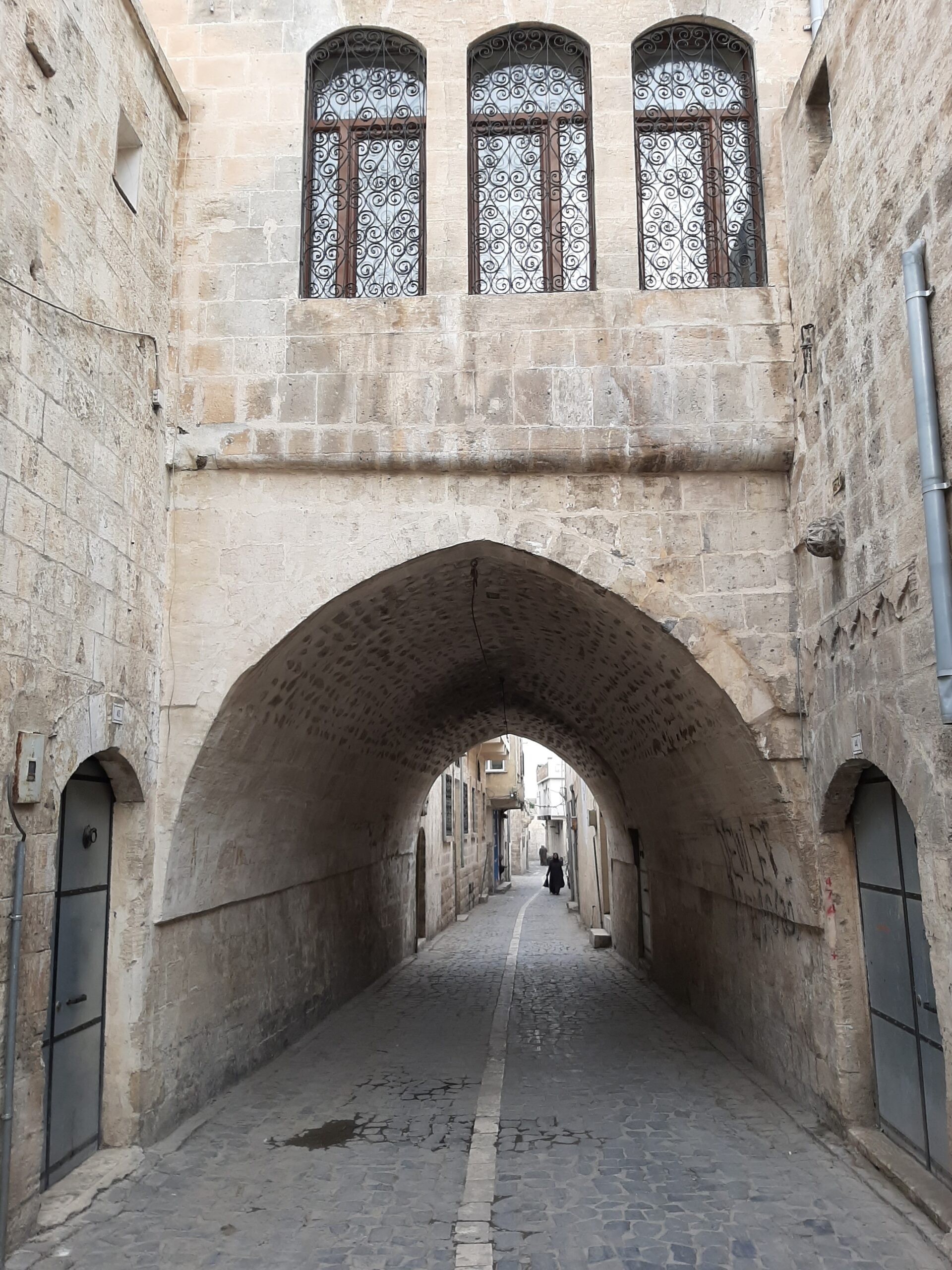
Almost two kilometres east of the necropolisis, around a 25 minute walk, you come to the Beykapısı Bedendibi neighbourhood. We went there because I’d read you could see traditional crafts like ebru, calligraphy, illumination, wood carving and silversmithing being practiced in restored houses in this historical district inside the Beykapısı Bedendibi walls. Despite leading Kim along numerous narrow winding streets I failed to find any workshops. Nonetheless both of us enjoyed wandering past houses made from nahit, a stone local to Urfa. Güllüoğlu Şok, where low pointed archways span houses opposite one another, was our favourite.
Given the heat and number of museums, historical sites and archaeological artefacts I took in during all of my visits to Sanliurfa, even my love of the music of Ibrahim ‘Ibo’ Tatlises wasn’t enough to get me to the İbrahim Tatlıses Müzik Müzesi. It’s located south east of Baliklı Göl.
WHAT TO EAT IN SANLIURFA
The first three times I went to Urfa I was in the moment so didn’t record where or what I ate. The last time was during Ramadan so there were limited places open for lunch and in the evening, all the restaurants were packed so getting a table was like an extreme sport. Luckily we found one at Halil Ibrahim Sofrasi where they were happy for us to order single dishes off the menu rather than the iftar set meal. The latter are very good but too much food for one person if you haven’t been fasting. The restaurant has a terrace overlooking Baliklı Göl and both the food and the service were very good, meeting Turkish standards set by repeat diners rather than one off visits by tourists.
This being Sanliurfa, you have to eat Urfa Kebab (number 8 on this list) at least once. Also, even if you don’t have a sweet tooth, make an exception and try either the şıllık or the billuyirye, preferably both. Şillik is a local dessert adapted from Syrian cuisine. Thin crispy layers of pastry are filled with pieces of crumbled walnut and topped with slivers of pistachio and the whole lot is drenched in a smoky flavoured sugar syrup.
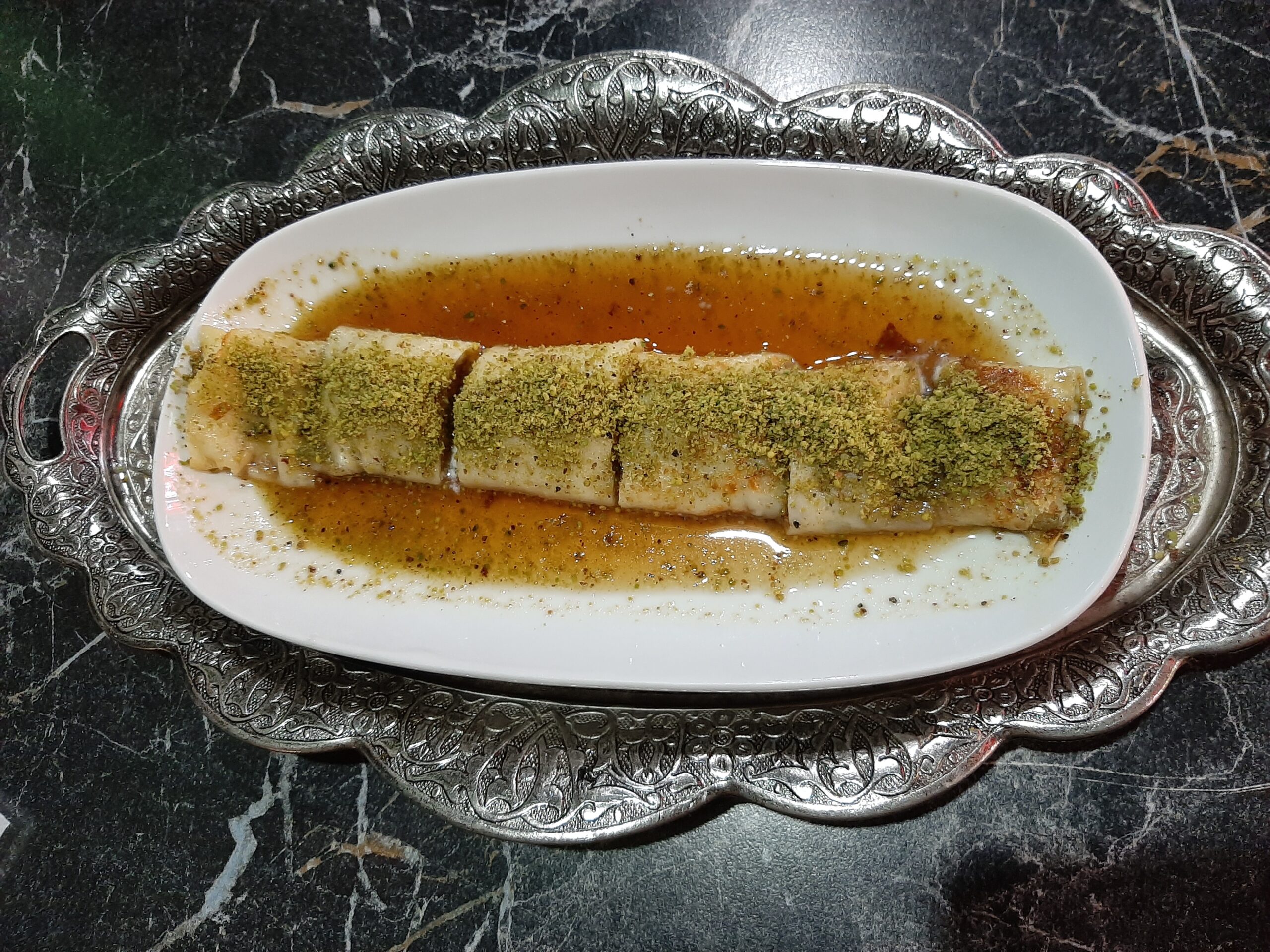
The şıllık you can see in the above photo was lovely. We ate it at Safi Künefe Tatlısı on Balili Göl Caddesi. Another night we passed up the chance of a second serving and continued up to Sarayönü Caddesi in pursuit of billuriye. Billuriye is similar to kadife, a dessert made from twisty strands of pastry that look like wire, soaked in cheese and honey the cooked in a round flat dish over a high heat. The first place was sold out but a bit further on we found Hacıbaba Künefe. We grabbed the last empty table and placed our order. There were lots of billuriye already on the go for other customers so we had a bit of a wait but the time passed quickly. Being the only foreigners there meant everyone wanted to ask us a question and being able to speak Turkish meant the conversations lasted some time.
It also meant I could ask for and get a coffee. Admittedly I was hanging out for a flat white, but even a Nescafe in Urfa, the land of mirras and menangec coffees, is hard to come by. However I’d bought some 3-in-1 sachets and when I explained my predicament to the waiter, he brought out two cups and some hot water.
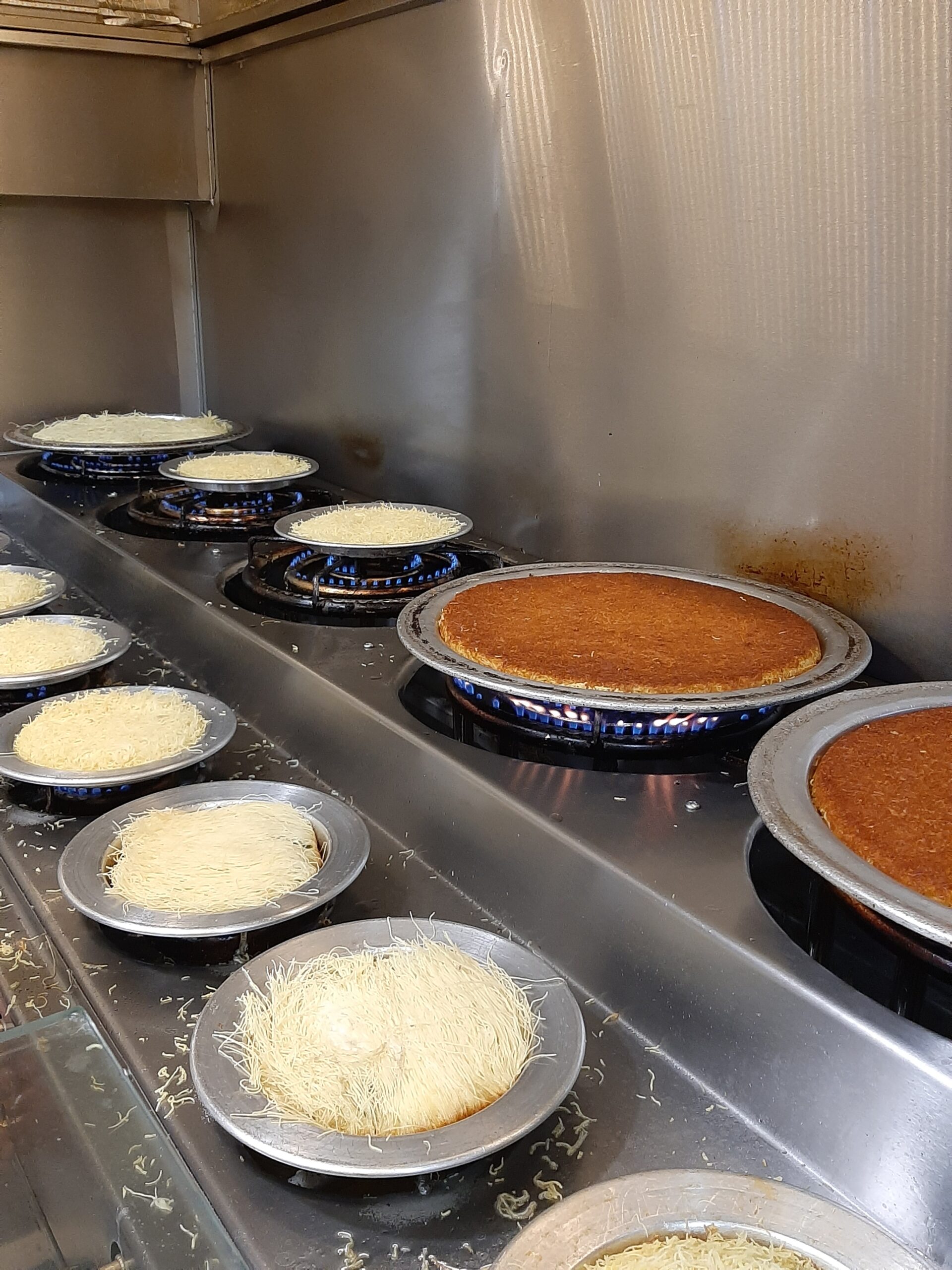
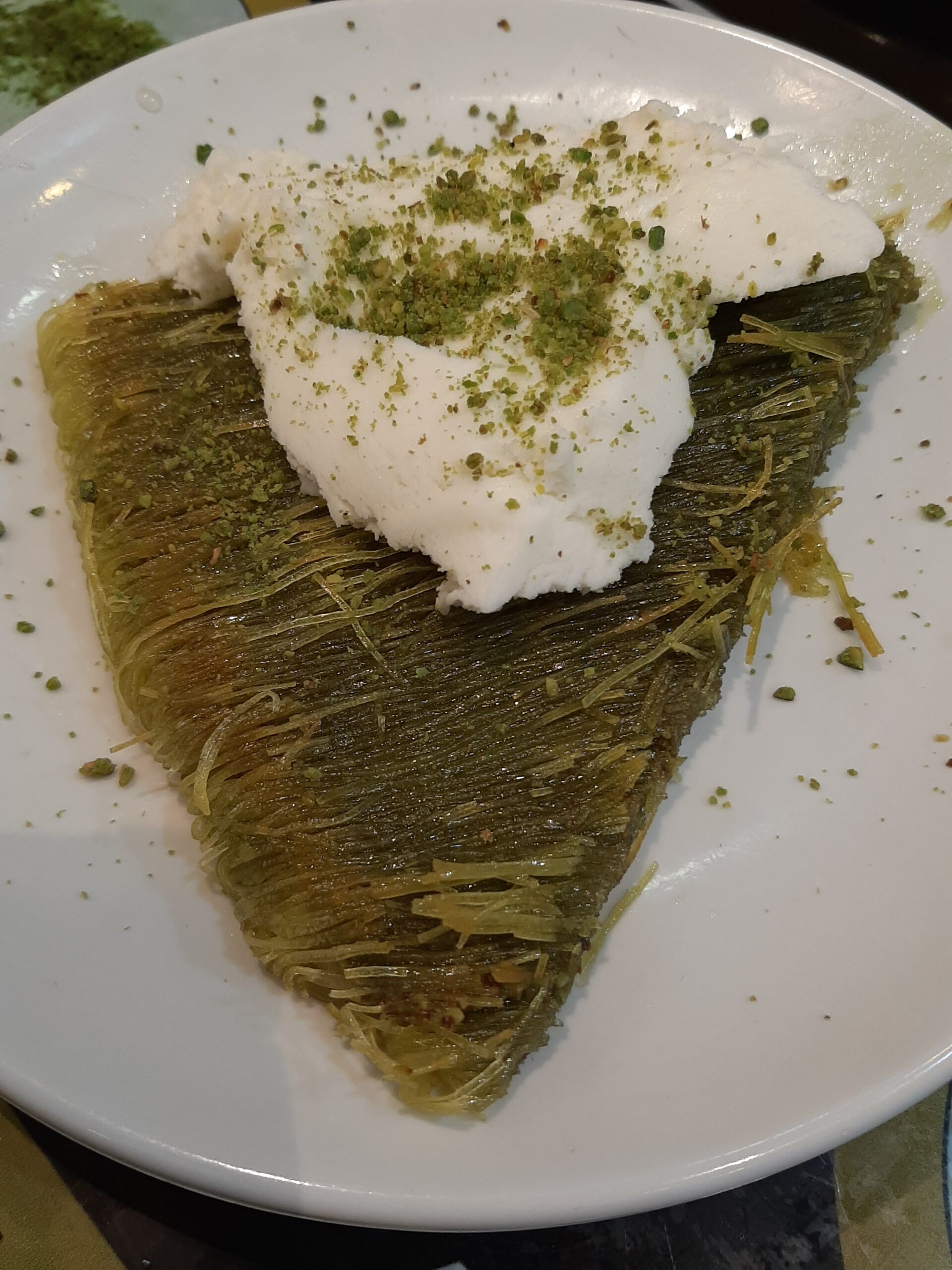
According to my research the best billuriye in Sanliurfa is served at a place called Gökçen but that meant catching a number 61 bus somewhere into the suburbs. I’ve bookmarked it for next time but honestly, Hacıbaba Künefe’s billuriye was fabulous.
Speaking of local coffees, we did try mirras coffee at Cardakli Kösk. It’s a coffee made using mirras, bitter leaves often chewed as a stimulant. We drank it after our meal at the restaurant which I’d like to recommend, with caveats. The food was nice but the staff were both lackadaisical and pushy, recommending we order more than we wanted then taking forever to clear the table and bring the bill. When it came we had a bit of a conversation about it and a few items we didn’t order were removed. Given it was Ramadan they might well have been under the weather from fasting, but buyer beware.
If bitter coffee isn’t to your taste you might like menengiç coffee. To my palate this coffee tastes really strange, even with the thick layer of crushed pistachio nuts sprinkled over the top. I can’t really describe what makes it taste so odd to me, but definitely try it once.
NB: In my quest to drink a coffee I ordered a double expresso at the Archaeology Museum cafe but it was really just Turkish coffee with milk. Very late in the trip we came across a branch of Kahve Dünyası in the Piazza shopping centre, opposite the museum, when we went in to escape the punishing heat.
WHERE TO STAY IN SANLIURFA
In the last decade Sanliurfa has become more popular with secular domestic tourists. One big positive from this is that former private homes have been converted into hotels, giving you the chance to imagine what domestic life was like in the homes of the elite, and indulge in a bit of luxury.
On my last visit I stayed in Urfa Evi Butik Otel. It’s at Balıklı Göl Caddesi No 44 and we had a view through to the pools from our room. When I first saw the bathroom in the Standard King Room I was a bit taken aback by the mini-hamam set up and asked for a room with a conventional shower. However those rooms don’t have the view so I stayed put and I’m glad I did. By the end of our stay I was completely converted to pouring warm water over myself while sitting on a marble bench, daydreaming about all the wonders I’d seen. Now I’m wondering if I can install one at home!
WHEN TO GO TO SANLIURFA
Summer in Sanliurfa is scorching but it is a dry heat making it more manageable than if it were humid. That said, temperatures can hit the high 30s (Celsius) or even reach the 40s so it’s not for me. I prefer to visit Sanliurfa in spring or autumn. In April the weather averages 23 degrees in the day and 11 at night while it’s 29/16 in May. The daytime temperature still averages in the mid-30s in September but drops to 27 during the day in October, and 15 overnight. Provided you’re rugged up November is good too, with temperatures at 18/8.
GETTING TO AND FROM SANLIURFA
From Istanbul, the easiest way to reach Sanliurfa is by plane to the GAP Şanlıurfa Airport. From there you can catch a Havas bus into town. It takes 45min and costs 95tl per person. The closest stop to the old town is at the Nevali Otel Yanı Belediye Otobüs Durağı (in front of the Navali Hotel). It’s around a 3km walk to the fish ponds but we caught a taxi. Generally the taxi drivers use meters but always ask for an approximate price in advance.
You can also catch a taxi from the airport or arrange to have a private transfer to your hotel waiting for you at the airport.
I strongly suggest you combine your trip to Sanliurfa with a visit to Gaziantep. It takes between 2-2.5 hours by intercity bus to get there. Trust me, you won’t be disappointed.
************************************************
*there is a new pricing system as of 1.3.24. Entrance fees are quoted in Euro but paid in TL, calculated on daily exchange rate. Some of these sites are free for Turkish citizens holding a Muze Kart.
************************************************
Now that you’ve got to the end of this post I hope you feel confident in planning your own trip to Sanliurfa. Here are a few other tips:
For FLIGHTS I like to use Kiwi.com.
Don’t pay extra for an E-VISA. Here’s my post on everything to know before you take off.
However E-SIM are the way to go to stay connected with a local phone number and mobile data on the go. Airalo is easy to use and affordable.
Even if I never claim on it, I always take out TRAVEL INSURANCE. I recommend Visitors Coverage.
If you’re travelling alone, check out this post on useful solo travel tips Turkey for women (and men).
I’m a big advocate of public transport, but know it’s not suitable for everyone all the time. When I need to be picked up from or get to Istanbul Airport or Sabiha Gokcen Airport, I use one of these GetYourGuide website AIRPORT TRANSFERS.
However you travel, stay safe and have fun! Iyi yolculuklar.
